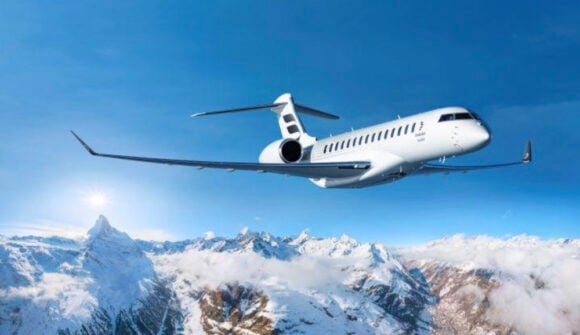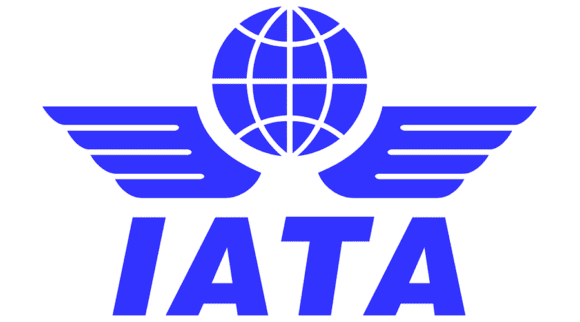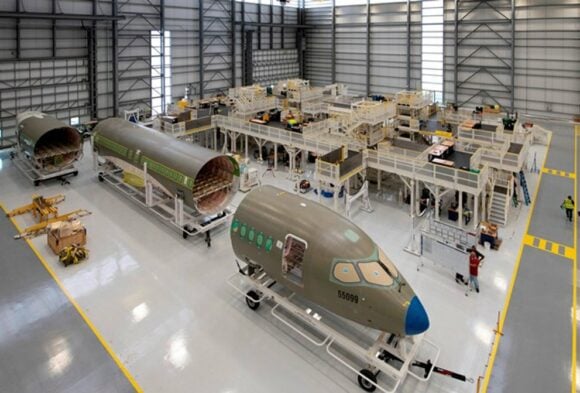At the recent Farnborough show there was a lot of attention on Airbus and Boeing as the biggest news makers. With these two firms having the largest volume sales in order size and value, this is to be expected. But, arguably, the market around 100 seats is far more vibrant and a lot more competitive.
For a start there are more players: Bombardier, Embraer, Mitsubishi, SuperJet and AVIC. This makes for a much more cut-throat environment. Bombardier and Embraer are market defenders in the segment, while SuperJet, Mitsubishi and AVIC are segment disruptors.
Bombardier has two options in the 100 seat segment, the CRJ1000 and the CS100 on offer. The CRJ1000 may be one of those aircraft that became a stretch too far, much like the A340-600. It has not seen great sales, especially when compared with the similarly sized CRJ900. Bombardier looks to do much better with the CS100, a state-of-the-art aircraft.
Embraer starts off from a very strong base with its E-Jet range. It now starts the process of potentially refreshing over 1,500 E-Jet sales with the E2. The company’s confidence in bringing the E2 to the recent show is impressive – the last leg into the show was only the aircraft’s 26th flight. The smaller E-190 and refreshed E2-190 make Embraer a strong incumbent in the 100 seat market.
New players now compete against these two segment leaders. Mitsubishi has what appears to be a technically fine product. But it has been delayed and also faces a tough market – over 75% of current sales are to US regional airlines that cannot currently use the aircraft due to scope clause restrictions. MITAC (as the company is known) has to quickly refocus its efforts outside the US or its challenges exacerbate. MITAC faces an uphill battle.
China’s AVIC has its ARJ21 flying with the launch customer. It is less well known that this customer is part of the AVIC combine, so the airline was forced to buy local. All the same, AVIC will learn and improve. AVIC is no threat to the western OEMs, but its existence makes breaking into the large and growing China market that much more difficult. Moreover, China will use its political influence to ensure the AVIC products spread beyond China to places like the Congo, that cannot afford western aircraft.
Finally there is SuperJet, a firm made up of an Italian arm and Russia’s Sukhoi. Sukhoi is marketing the SSJ in the east and former parts of the CIS. SuperJet, based in Venice, focuses on Europe and other western markets. A recent success at CityJet marks the EU debut of the SuperJet while Mexico’s InterJet has 22 in service. After Bombardier and Embraer, we think SuperJet is the sleeper, and the option most overlooked. Typically passengers have no idea what they are flying on, and the Italian arm of SuperJet has been very clever in optimizing cabin design. These two images demonstrate this.
SuperJet will make it harder for other entrants because they have an aircraft that is flying and delivering. It is also priced aggressively because it has to overcome Bombardier and Embraer. This keeps SuperJet “fighting fit”. Superjet is the sleeper among the players in this segment. When we asked SuperJet’s CEO about slow production speeds, he smiled and said as soon as sales picked up they would add people and match demand.
With two western airlines now using the aircraft, his confidence is well placed. This is especially the case with InterJet, whose daily hours is over seven on average. The Mexican airline is pushing the aircraft hard. Speaking with InterJet trainee pilots in Venice they explained the aircraft’s systems are “a bit different” but it is “built like a tank”. A strong aircraft is exactly what the segment needs as these aircraft flying multiple cycles every day and wear and tear can be significant. Consequently with a designer interior to please passengers and a sturdy airframe to please the operator, Superjet should not be ignored. They are going to keep the pressure on the big 2 and make this segment a competitive market.
Views: 12





The SSJ100’s cabin diameter is only 1.6 inches less than the CS100, so it is a spacious enough five-abreast design. There is also no doubt that it is selling a rock-bottom price. It is, however, a large regional jet more than a small mainliner (CS100).
There is certainly room in the market for healthy SSJ100 sales. The main difficulty is the tense political situation between the West and Russia. Mr. Putin will not be in place forever, and a new leader could do much to bring Russia back into the open economy.